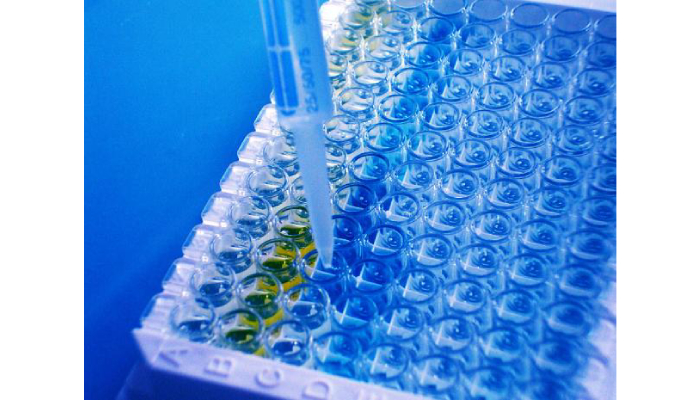
Laboratory automation has transformed the way we approach assay development by introducing systems that enhance efficiency and accuracy. It greatly minimizes human error and variability, common issues in manual processes, thus allowing high-throughput screening of compounds. Key advancements include modular automation systems that adapt to specific requirements and integration with AI for data analysis, which streamlines decision-making in drug discovery. While these innovations lead to increased throughput and improved accuracy, they also present challenges like high costs and the complexity of integrating new systems into existing workflows. Nevertheless, as automation evolves, its role will be vital in advancing scientific research and drug development.
What is Laboratory Automation?
Laboratory assay automation is the integration of technology into laboratory processes, aimed at enhancing efficiency and accuracy. It employs robotic systems, software applications, and various control mechanisms to reduce manual labor. By automating repetitive tasks such as pipetting, mixing, and sample management, laboratories can focus more on complex analysis and scientific discovery. The overarching goal is to improve the speed and reliability of experiments while minimizing human error. Many modern laboratories have adopted automated systems for tasks like sample preparation, data collection, and analysis, which helps streamline workflows and maintain consistent protocols. This versatility allows automation to be adapted across various fields, including pharmaceuticals, biotechnology, and clinical diagnostics. Additionally, automation supports better resource management by reducing waste and optimizing time spent on research. Ultimately, laboratory automation plays a crucial role in making experimental procedures more reliable, paving the way for advancements in science.

Advancements in Assay Development
Recent innovations in assay development have drastically shortened timelines, making drug discovery faster and more efficient. Technologies such as microfluidics are at the forefront, allowing researchers to work with smaller sample volumes and achieve quicker reactions. Automated systems now have the capacity to conduct complex assays that once required significant manual input, which streamlines processes and enhances reproducibility. High-throughput screening technologies have also seen significant evolution, enabling the analysis of thousands of samples simultaneously.
Moreover, advancements in detection methods, including improved imaging techniques and biosensors, have greatly increased sensitivity and specificity in assays. The integration of robotics into these workflows minimizes human error during setup and execution, further increasing the reliability of results. With the rise of artificial intelligence, data analysis has become more sophisticated, allowing for better interpretation of results and faster decision-making in drug development. Real-time monitoring and adjustments during assay processes are now possible thanks to new software platforms, enhancing overall operational efficiency.
Modular Automation Systems Explained
Modular automation systems bring a new level of flexibility to laboratory environments. Designed to be reconfigured easily, these systems allow labs to adapt quickly to different assay requirements without the need for extensive downtime or major overhauls. This adaptability makes them particularly cost-effective, as laboratories can scale up or down based on their specific needs.
One of the standout features of modular systems is their ability to integrate various instruments and technologies into a cohesive unit. For instance, a lab might combine liquid handling robots with assay workstations, creating an efficient setup tailored to their workflow. This integration not only streamlines processes but also enhances collaboration among research teams, as standardized protocols can be shared and implemented across different projects.
AI and Data Analysis in Automation
AI is transforming laboratory automation by significantly enhancing data processing capabilities. With machine learning algorithms, large datasets can be analyzed much faster than traditional methods, which allows researchers to draw insights more quickly. This speed is crucial in the fast-paced environments of drug discovery and assay development. AI can identify patterns and correlations in assay results that might be overlooked through manual analysis, providing valuable insights that can drive experimental design.
Automated data analysis means researchers spend less time interpreting results, enabling quicker decision-making. For instance, AI tools can assist with predictive modeling, helping scientists optimize experimental conditions based on previous outcomes. This adaptability is further enhanced by automated systems that learn from past experiments, refining protocols for greater efficiency.
The Role of Cloud-Based Solutions
Cloud-based solutions have significantly transformed laboratory automation by providing remote access to systems, which enhances operational flexibility. Researchers can monitor and control experiments from virtually anywhere, fostering better collaboration among teams. This capability is particularly valuable for global projects where team members may be spread across different locations. With cloud solutions, data collected from experiments can be securely stored, analyzed, and shared, ensuring that sensitive information is protected while remaining accessible to authorized personnel.
Moreover, cloud platforms facilitate the integration of various laboratory systems, creating a cohesive research environment that streamlines workflow. Real-time data sharing is another critical feature, allowing researchers to quickly exchange information and insights, which is essential for collaborative projects. By leveraging cloud services, laboratories can also reduce costs related to local server maintenance and invest in scalable storage solutions that can grow alongside their research needs.
Effects of Automation on Assays
Automation has made a notable impact on assay development by enhancing throughput, which allows for the rapid testing of a larger number of samples. This speed is crucial in fields like drug discovery, where thousands of compounds can be screened simultaneously, significantly reducing the time it takes to move from initial testing to actionable results. Furthermore, automated systems improve the consistency and quality of results, minimizing human variability that often comes with manual processes. For instance, when using robots to pipette or mix samples, the likelihood of errors decreases, leading to more reliable data.
The ability of automated systems to handle complex workflows is another significant advantage. Some assays involve intricate steps that can be challenging to perform accurately by hand, but automation can streamline these processes. This capability not only enhances reproducibility—an essential factor for regulatory submissions—but also allows researchers to allocate more time to data interpretation and decision-making rather than repetitive manual tasks.
Challenges of Implementing Automation
Implementing automation in laboratories is not without its hurdles. One significant issue is the initial cost of automation systems, which can deter many facilities, especially smaller labs or academic institutions. The financial investment often requires careful budgeting and planning. Additionally, integrating these systems into existing workflows may necessitate substantial changes, including retraining staff to adapt to new technologies. Some laboratory personnel may feel resistance to these changes, preferring traditional methods they are comfortable with, which can create barriers to adoption.
The complexity of automated systems also introduces challenges, particularly in troubleshooting and maintenance. If a system malfunctions, the intricate nature of these technologies can make it difficult to identify and resolve issues promptly. Furthermore, there are concerns surrounding job security, as increased automation may reduce the need for skilled labor in certain tasks, leading to anxiety among staff about their roles.
Future Trends in Laboratory Automation
The landscape of laboratory automation is on the verge of significant transformation. One prominent trend is the integration of artificial intelligence, which will lead to smarter systems capable of analyzing data more efficiently and making informed decisions. This AI integration will enhance not only data processing but also the overall workflow in laboratories, making them more effective. Additionally, advancements in robotics are paving the way for more sophisticated automation solutions tailored to the unique requirements of various research fields. As researchers face specific challenges, customized robotic systems will offer targeted support, increasing the versatility of laboratory automation.
Sustainability is also becoming a focal point in laboratory automation. Efforts to reduce waste and energy consumption are essential as laboratories strive to become more eco-friendly. The development of compact and efficient automated systems through miniaturization will contribute to this goal, allowing labs to operate with fewer resources while maintaining high output. Moreover, collaboration between automation engineers and scientists will be crucial in fostering innovative solutions to laboratory challenges, ensuring that automation evolves alongside scientific inquiry.